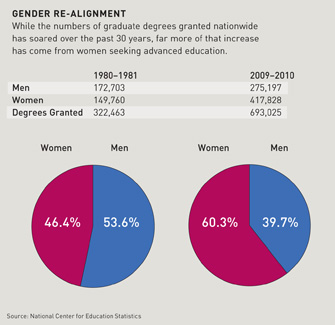
Modes of Delivery
There was a great deal of discussion on the ways faculty members communicate with students. As was pointed out, the basic teaching format had held steady for about 800 years from the birth of the university in the middle ages to the advent of the Internet age. Today, change is a constant.
Columbia College is a textbook case of the same. Steve Wiegenstein, dean of graduate studies, observed that of the roughly 1,400 graduate students enrolled in four masters programs, about 800 of them are in online programs. Said Wiegenstein, “That’s an opportunity and a challenge: making sure the quality of the experience for the online student matches that of the classroom based student.”
Missouri S&T has a comparable number of students who are taking online courses, and virtually all of them are professional students from organizations like the Boeing Co., said Venkat Allada. These students are drawn from all over the world and both faculty and students thrive on the interaction between academia and industry.
“Is this strategy something that speaks to the core of the mission of the institution,” asked George Justice pointedly of online education, “or is this a way to address funding?”
Wiegenstein did not see the integration of online programs as an either/or proposition. He acknowledged the temptation to throw everything on line, but Columbia College has refrained from doing that. “There are some programs that we simply stayed out of,” said Wiegenstein, “because we didn’t feel like we could legitimately put certain programs on line.”
As Laurie DiPadova-Stocks reminded her colleagues, Park University is known in part for its online development. She agreed that implementation had to be done very carefully. In her experience, the good online class is small, and there is real cost for course development and monitoring. She is also a real fan of the face-to-face experience and sees a place for integration of the two approaches.
Janice Putnam pointed to some established best practices that can be modified as universities move forward. “It is moving fast,” she said of the technology, “but there are people trying to make sure there are standards.”
At Park University, Laurie DiPadova-Stocks finds it “mind-boggling” that she can develop a course and have other people teach it and have a reach “that is impacting students in a way I’ve never dreamed of.”
“Each university has to see a balance between online and face to face,” agreed Pawan Kahol. Most of the online courses that are being developed now at Pittsburg State mandate student presence on campus for at least two or three days during a semester.
George Justice tackled the question of how universities manage to adapt their online programs to the continually improving delivery formats. As he explained, MU has an educational technologies group, one of whose functions
is “trying to look at what’s next.”
Ideally, this group will help the university make purchasing decisions and help the faculty adapt to the new and frightening changes in technology. A continual problem for large state universities, Justice added, is that “it’s impossible to move to the optimal pedagogical circumstances because our organizations are too clunky to get there.”
Customizing the Curriculum
George Justice posed a hypothetical question about a Hallmark-employed mother of three, wanting to take grad courses. Like most traditional graduate students, she may not know what she wants to do. “What degree should she get,” he asked, “and where and how should she get it?”
Missouri State University “has a program made for those people,” said Tom Tomasi, and it is available online. As he explained, it is designed for the individual whose background is not in business, but who has evolved into management ranks not a little bit anxious about the managerial skills she ought to have. So about two-thirds of the classes are designed to develop business skills; the rest are to get graduate-level experience in the individual’s discipline. Tomasi believes his program to be one of a kind.